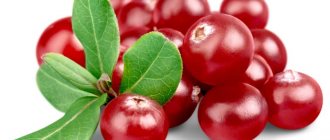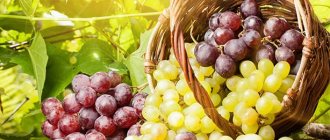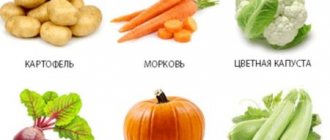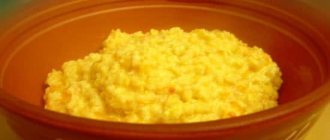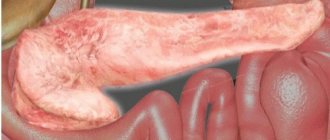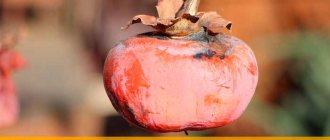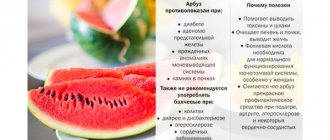Many forest berries (cranberries, lingonberries, blueberries, strawberries), due to their healing qualities, are widely used in traditional and folk medicine to treat various diseases. Treatment of pancreatic diseases requires adherence to a special diet that excludes the consumption of sour berries. Despite its sour taste, cranberries for pancreatitis can be added to the diet after mandatory consultation with your doctor.
Benefits of wild berries for humans
The composition of these bright red berries is striking in its richness. This is simply a storehouse of substances necessary for the body:
- vitamins: high content of vitamin C, A, E, PP, B (1, 2, 6, 9),
- trace elements: potassium, calcium, magnesium, iodine, iron and others,
- soft plant fiber,
- simple sugars in small quantities,
- pectins,
- organic acids: benzoic, citric, salicylic, malic and others,
- flavonoids, antioxidants.
Thanks to this composition, cranberries bring many benefits:
- Effectively enhance immunity.
- Decrease in body temperature during febrile conditions.
- Antioxidant effects that promote rejuvenation of the skin and the whole body, prevention of the appearance of malignant neoplasms.
- The mild laxative effect of cranberries helps normalize stool and eliminate constipation.
- Increased production of gastric and intestinal juices, pancreatic enzymes, bile by the liver due to the high content of organic acids, which have a stimulating effect on the functions of the gastrointestinal secretory apparatus. This effect is useful for hypoacid gastritis, chronic cholecystitis, enterocolitis.
- Binding and removing toxins, toxic metabolic products.
- Improving the condition of the myocardium and vessel walls.
- Thinning of the blood, preventing the formation of blood clots due to its increased viscosity.
- A diuretic effect that promotes the removal of uric acid salts and the prevention of urolithiasis.
- Anti-inflammatory, antibacterial effect, due to which cranberries are used to treat infectious diseases of the upper respiratory and urinary tract.
How to cook cranberries for pancreatitis
For diseases of the pancreas in the chronic stage, it is allowed to consume cranberry juice. It’s quite simple to prepare and can be a tasty substitute for ordinary tea.
For it you need to prepare the following ingredients:
- 1 liter of clean water;
- a glass (250 g) of cranberry fruits;
- 1 tbsp. l. sugar or honey.
Ripe autumn berries, scarlet in color, without greenery or rot, are suitable. They must be sorted out and washed thoroughly under running water. Then they are ground through a sieve or crushed with a blender.
Afterwards, you need to boil water, cool it slightly, to about 90 ° C, and pour berry puree into it. Add sugar or honey to the drink, mix thoroughly and let it brew for about 30 minutes.
Before consumption, the fruit drink is filtered and cooled to a comfortable temperature.
Important! Hot drinks and food are contraindicated for pancreatitis.
You can drink a glass of fruit drink 3 or 4 times a day. Be sure to consume it after meals so as not to aggravate gastrointestinal diseases.
Cranberry jelly
You can replace fruit drink with another drink that is allowed for diseases of the digestive system and pancreatitis - cranberry jelly. It helps relieve the inflammatory process. Thanks to its enveloping properties, jelly reduces gastric acid and reduces pain. Also, the drink does not stimulate the production of pancreatic juice, which contributes to the transition of the disease from the acute to the chronic stage.
During the remission stage, jelly can be consumed provided that it is prepared at home and from natural products.
How to use it correctly:
- For the first time, jelly is drunk no more than 100 g per day.
It is important to monitor your well-being. If the condition does not worsen, you can drink a glass of the drink twice a day. Important! Drink jelly at a comfortable warm temperature - cold and hot drinks are prohibited for pancreatitis. - Kissel is consumed as an independent dish for breakfast or afternoon snack. You can drink it with cottage cheese casserole or soufflé.
- It is unacceptable to use commercial dry jelly for pancreatitis. For its production, harmful chemicals are used that can provoke an exacerbation of the disease.
A homemade viscous drink, when properly prepared and consumed, will only bring benefits.
How to make cranberry jelly
To prepare cranberry jelly, you need to take 2 liters of water, 500 g of berries, 75 g of starch.
First, the berries are sorted, washed under running water, crushed and filled with water. Place the pan with the mixture on the fire and bring to a boil. Afterwards the compote must be strained. Then the starch is dissolved in a glass of cold water. The strained cranberry drink is put back on the stove and the starch mixture is added, constantly stirring. Thus, the jelly is brought to a boil and removed from the stove.
Once cooled to a comfortable temperature, the drink is ready to drink.
How can cranberries harm a patient with pancreatitis?
If you self-medicate, do not consult a doctor about diet, or do not follow his recommendations for consuming cranberries, you can greatly harm your body. What harm can cranberries bring to a person diagnosed with pancreatitis:
Cranberry for acute pancreatitis
At the stage of exacerbation of the chronic inflammatory process in the pancreas, the patient is forced to follow a very strict diet, completely excluding the consumption of all acidic foods, including cranberries.
The diet includes permitted vegetables, cereals, fruits, lean meat, fish and some other foods that do not harm the inflamed pancreas or burden it. Cranberry does not belong to these products, so it is completely excluded from the menu.
Eating berries during remission
During remission of the disease, the diet becomes more varied. It is allowed to add cranberries to the menu, but only heat-treated ones, as part of healthy, tasty drinks and desserts: compote, fruit drink, jelly, jelly, marshmallow, marmalade. Heat treatment somewhat inactivates aggressive organic acids, reducing their irritating effect on the mucous membranes of the digestive tract, and also helps to soften the plant fibers in the skin of the berries.
After the first time eating a dish with cranberries in small quantities (about 3-4 cranberries), the patient should carefully monitor their condition. If your stomach does not hurt, there is no flatulence or diarrhea, then you can introduce more berries (up to 100–150 g) into your diet. The daily amount of product for pancreatitis is determined by a gastroenterologist or nutritionist individually for each patient.
Cranberry juice for pancreatitis
Cranberry juice is a very healthy drink that saturates the body with all the vitamins, minerals, and antioxidants it needs. To prepare it you will need 250 g of berries, 1 liter of clean water, a tablespoon of sugar or honey. Steps for preparing cranberry juice:
If it is well tolerated, it is recommended to drink cranberry juice 1 glass 3-4 times a day after meals. It should not be consumed on an empty stomach to avoid exacerbation of gastrointestinal pathologies.
Properties of sour berries
Its benefits in diagnosing this disease are obvious and all this is due to its medicinal properties:
- Its sharp sour taste indicates a high content of vitamin C - a natural antibiotic that suppresses inflammatory processes in the pancreas, the growth and development of pathogenic microflora.
- The berry also contains soft fiber - this helps to naturally cleanse not only the gastrointestinal tract, but also the bile ducts. In this case, cranberry juice is especially indicated for pancreatitis - it not only supplies the body with useful macro and microelements, but also improves the functioning of the gastrointestinal tract and bile ducts, stimulating the production and excretion of bile.
- Are cranberries good for the pancreas in general? Yes, because it helps remove heavy metals and toxins from the body that negatively affect the functioning of internal organs and systems. And the pancreas as well - cranberry in this case acts as a natural cleanser for the body, the pancreas and its ducts, improving their functioning and general condition.
- Following a strict diet, the patient adheres to the principle of minimal calorie consumption, and 100 grams of this berry contains no more than 30 calories. Therefore, with the maximum amount of useful components, it contains a minimum of calories, without burdening the work of the pancreas, without thereby causing harm to it.
- The berry, due to its natural bitterness and sourness, helps improve the functioning of the gastrointestinal tract and appetite, the process of digestion and assimilation of food and, as a result, a speedy recovery. We can conclude that if you have pancreatitis, it is acceptable to eat cranberries.
Product during exacerbation of the inflammatory process
Due to the acids contained in cranberries, they are contraindicated during periods of exacerbation of pancreatitis. It is precisely due to the high level of acidity that its juice will provoke excessive gas formation and pain, attacks of gastrointestinal disorders manifesting themselves as diarrhea.
Among other things, they increase the production of gastric juice, and this is not recommended if the pancreas is damaged.
Product during a period of stable remission
If during the period of exacerbation of the pathological process this sour berry is categorically contraindicated even in the form of fruit drinks and decoctions, then during the period of remission it can be introduced into the diet even fresh.
In particular, it is worth remembering that it contains substances that enhance the production of pancreatic secretions and this has a beneficial effect on its recovery. The main condition in this case is to consult with your doctor about how much cranberries you can eat per day.
Most often, doctors limit the patient to ½ cup of berries per day. From this amount you can prepare and drink cranberry jelly for pancreatitis, and also add this berry to porridge, or simply grind it with honey and eat 1 tsp. after the main meal.
Lingonberries as an alternative to cranberries
A berry similar to cranberries in composition and medicinal properties is lingonberry. It contains a huge amount of useful substances that contribute to the health of the body, treatment and prevention of many diseases:
A useful drink is a decoction of lingonberry leaves for the treatment of kidney and urinary tract diseases.
Lingonberries and acute pancreatitis
During an exacerbation of inflammation, it is not recommended to eat lingonberries due to the high concentration of acids in the pulp of the berries, which enhance the synthesis of digestive juices and can cause a deterioration in the patient’s well-being and even a life-threatening complication - pancreatic necrosis, which requires immediate consultation with a surgeon.
Features of use during the remission stage of the disease
Lingonberries for pancreatitis in the remission phase are allowed for consumption, by analogy with cranberries, in the form of jelly, cooked on the basis of diluted lingonberry juice, lingonberry juice, compote. And they also prepare a variety of desserts with the addition of lingonberries (mousses, puddings, jams, marmalade), sweet and sour berry sauces for serving with meat, fish, and vegetable dishes.
Healthy berry-based recipes
After coordinating your diet with your doctor, you can treat yourself to delicious cranberry-based drinks. They will be an excellent and safe alternative to store-bought juices and soda, which should not be consumed if you have pancreatitis.
At home, you can prepare a variety of drinks from frozen or fresh berries for your health:
- The first option for preparing fruit juice: wash and sort 250 grams of berries, fill them with 1 liter of clean water and put on fire. After boiling, the fruit drink is boiled for another 5-7 minutes, allowed to cool slightly, the berries are lightly mashed and filtered. You can sweeten the finished drink with honey or add a little sugar and drink 1-2 glasses a day.
- The second option for preparing fruit juice: 250 grams of prepared berries (preferably fresh) need to be mashed into a paste using a masher or blender, poured with 1 liter of warm boiled water and left for 1.5-2 hours so that the berries completely release their juice and vitamins. After the set time, the mixture is filtered and drunk throughout the day.
- Berry tea: 450 ml. boiling water, you need to take 1 tablespoon of tea leaves (black or green variety), 5 currant leaves, 2-3 mint or lemon balm leaves and 10 berries (they must first be washed and crushed into puree). It is advisable not to use a lot of tea leaves, since weak tea is recommended for pancreatitis. The mixture is infused for 10-15 minutes in a thermos or teapot.
- Healthy jelly: 1.5 liters of water, 350 grams of berries, 5 tablespoons of potato starch, 200 grams of sugar (it is advisable to reduce the proportion of sweetener or use natural substitutes). Grind the washed berries to a puree, squeeze out the resulting juice and set it aside. Dissolve starch and water in a separate bowl. The remaining berries are poured with boiling water and cooked for 5-7 minutes over low heat. The finished broth is filtered and brought to a boil again, after which it is mixed with a mixture of starch, sugar and cranberry juice. The mixture is thoroughly mixed and cooled.
(no votes yet)
The healing properties of cranberries
Cranberries are 90% water, and the remaining 10% are:
- organic acids;
- vitamins: A, K, E, PP;
- minerals: calcium, phosphorus, manganese, iron, potassium, etc.
The berry is a natural biostimulant, helps boost immunity, is considered an antibiotic, and it also perfectly relieves swelling.
Shows medicinal properties for nervous exhaustion, hypovitaminosis, dyspeptic disorders, pancreatitis, etc.
What to do if you have diabetes?!
We recommend reading an exclusive article on how to forget about diabetes forever... Read more >> |
ul
Cranberry in the acute phase of pancreatitis
Unfortunately, in the case of pancreatitis, many of the advantages of cranberries become its serious disadvantages. Sour berries are a storehouse of various organic acids: quinic, malic, benzoic, citric, etc. (3.1 g per 100 g of berries), and also contain essential oil. All these substrates enhance the formation of both gastric and pancreatic juice, the components of which aggravate the inflammation of the affected pancreas. Moreover, not only fresh cranberries, but also cranberries that have undergone serious heat treatment (i.e. cranberry jam, fruit juice, etc.) have such a stimulating effect.
In addition, cranberries are rich in fiber (3.3 g per 100 g of berries), so they have a laxative effect and can cause severe gas formation and intestinal spasms (pain). Taking into account these qualities, any cranberry is extremely undesirable in the acute phase of pancreatitis.
Acute pancreatitis and cranberry
Mousse, baked goods, marshmallows, jelly, syrup, jam - this is not a complete list of where cranberries are directly involved. It is used as a decoration for sauerkraut, served with game, and seasoned with juice as a side dish. Berries have an impressive list of advantages:
- This is a wonderful strengthening remedy that increases the body's immune resistance. The high content of vitamins C helps improve protective functions. In addition, cranberry syrup, jam and fruit juice help reduce high fever and suppress inflammatory processes during colds.
- The tannin contained in cranberries provides resistance to infectious diseases, and also helps with disorders of the genitourinary system (cystitis and kidney stones).
- It has a positive effect on the functioning of the heart and blood vessels: the walls are strengthened, elasticity is increased, and the likelihood of blood clots is minimized thanks to minerals and trace elements. Cranberries are especially recommended for hypertensive patients suffering from high blood pressure (BP).
- In cosmetology, cranberry is valued for its wound-healing and nutritional abilities in the area of violation of the integrity of the skin, ranging from acne and sores to burns, psoriasis, lichen, eczema and lice.
It is known that cranberries have the ability to regulate the functioning of the gastrointestinal tract. Fiber, pectin substances and cellulose prevent the development of peptic ulcers and relieve pain syndromes associated with gastritis and colitis. Cranberry juice stimulates the digestive system and improves the functionality of the pancreas.
In the acute phase of pancreatitis, cranberries are excluded, regardless of whether they are served fresh or after heat treatment, that is, in the form of mousse, fruit drink or jam, and here’s why:
- Organic acids increase the production of pancreatic and gastric juices, which injures the inflamed organ.
- The abundance of fiber reduces the laxative effect, intestinal spasms, flatulence, etc.
Cranberry Useful properties
Organic acids include malic, citric and benzoic. It is benzoic acid that is a natural preservative and allows you to preserve cranberries without any processing, just pouring boiled water. Pectin and tannins, as well as many macro- and microelements, were also identified. Cranberry berries and extract are used as an antipyretic, cooling and antiscorbutic agent, as well as to enhance the effect of antibiotics and sulfonamides. Cranberry enhances the secretion of the glands of the gastrointestinal tract and is used to treat gastritis with reduced secretion.
Calorie content of 100 grams of cranberries - 26 kcal
Nutrient content per 100 grams of cranberries:
Proteins -0.5 g Fats - 0 g Carbohydrates -3.8 g B1 - 0.02 mg B2 - 0.02 mg C - 15 mg Ca - 14 mg Fe - 0.6 mg
Fruit juice and cranberry syrup are used as an antifever, for vitamin deficiencies, inflammatory diseases, to reduce fever and quench thirst. When treating respiratory diseases, rheumatism, sore throat, it is good to eat cranberries with honey. Eating cranberries improves appetite and digestion. The production of gastric and pancreatic juices increases. This leads to a cure for gastritis with low acidity of gastric juice, as well as inflammation of the pancreas. Cranberries also have a diuretic and bactericidal effect and are useful for pyelonephritis.
Beneficial features
Its frequent use promotes removal from the body:
With pancreatitis, cranberry has a certain place in the treatment of this disease.
The effect of cranberries on the human body:
- Increases immunity due to the large amount of vitamin C included in the composition.
- During a cold, you need to drink an infusion or eat fresh fruits, which helps reduce high body temperature.
- The berries consist of fiber, which, in turn, has a mild laxative effect. Recommended for problems with stool.
Cranberry has a positive effect on the cardiovascular system:
For a long time, the leaves and berries of the plant have been used to treat inflammation of the pancreas.
Cranberry juice
Despite the fact that these berries are a food product for pancreatitis that patients should be wary of, fruit drinks from this berry, on the contrary, are included in the diet for pancreatitis at all stages of the disease. Since this particular drink has properties that help normalize the functioning of the pancreas, relieve inflammation and swelling, and also eliminate pain.
Cranberry juice is especially useful during the remission phase. It prevents the recurrence of attacks and promotes rapid recovery. Therefore, it is recommended to drink this drink for pancreatitis at least 200 ml per day.
Author : Skryagina Ekaterina, especially for the site Moizhivot.ru
The healing properties of honey
Honey is a unique bee product. It is a natural remedy for the prevention and treatment of many ailments. It consists of sugars (glucose, fructose, maltose, trehalose, etc.), rich in the presence of vitamins: C, E, PP and B vitamins. The bee product also contains acids: malic, grape, citric. Honey is rich in microelements: potassium, magnesium, calcium, copper, iron, phosphorus, zinc, sodium, chromium, boron, silicon, osmium, nickel, titanium, etc.
Honey can improve the functioning of the whole body, here is just a short list of its beneficial properties:
- manifests itself as a general strengthening agent;
- increases immunity, actively fights colds;
- normalizes metabolic processes in the body;
- improves the quality of blood;
- helps with cardiovascular diseases;
- treats burns, skin diseases, fungi, quickly heals wounds;
- may help treat liver/kidney diseases;
- normalizes the functioning of the gastrointestinal tract.
ul
